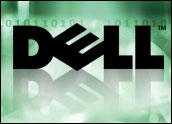
Taken together, VCE’s recently announced new offerings qualify as a generational step forward not only for the company, but also for the cause of converged infrastructures and, most importantly, for VCE customers and partners.
Prior to this, the company’s Vblocks delivered dramatic improvements in common data center metrics, including operational efficiency, speed of deployment, agility and availability. In fact, VCE has long focused on improving customers’ experience and speeding time to value, starting with what might be called its “45/48” business model. How does this work?
After extensive analysis and consultation, the customer orders the Vblock(s) and VCE, using standardized building blocks, manufactures and delivers the fully configured Vblock to the customer within 45 days. In the vast majority of cases, those same Vblocks are up and running 48 hours after delivery.
Full Steam Ahead
Given those results, it is little wonder that Gartner recently found VCE the market leader (with a 57.4 percent share) in the integrated infrastructure market segment. Nor is it surprising that some two-thirds (66 percent) of customers purchase additional systems — some ordering systems that exceeded their initial orders by as much as five times, according to the company.
However, VCE faces the same challenges in building sales and market momentum as every other vendor, as well as the same requirements for overcoming them:
- growing the portfolio;
- expanding use cases; and
- increasing competitive differentiation.
This newest announcement finds VCE succeeding on all fronts. On the portfolio side, the new Vblock 100 and 200 solutions provide a logical expansion of the company’s core offerings for a host of smaller or more limited customer requirements. Additionally, the new offerings should also quiet those who claim that VCE’s focus on supporting enterprise and business critical applications made the company a nonentity in lucrative markets for mid-sized businesses.
An SAP HANA Natural
That said, VCE is unlikely to ever become a mainstay among small businesses. The main use cases it identifies for the System 100 (simplifying/streamlining IT in remote/branch offices) and System 200 (mid-sized data centers, SPs and IT development organizations) are largely enterprise-leaning, reflecting the priorities of the company’s investors: VMware, Cisco and EMC.
That’s also likely the case in VCE’s new, specialized system for SAP’s HANA in-memory computing and database platform. Since virtually every major systems vendor is developing HANA-based solutions (not surprisingly, Oracle is the only exception — and seems likely to stay that way), SAP’s platform has been generating intense interest due to growing attention in analytics technologies and solutions.
The x86 basis of SAP HANA makes VCE a natural player here. Plus, the rapidly expanding catalog of HANA-supported applications and use cases (both from SAP and its host of HANA-focused developers) should pique serious interest among VCE’s customers, as well as among ISVs considering HANA.
Here Comes the FUD
However, software — in the shape of the Vision Intelligent Operations solution — provides the greatest competitive differentiation of VCE’s new offerings. Extending across the entire Vblock portfolio, the software is a powerful Vblock discovery engine and acts as a mediation layer between VCE systems and existing data center management tools, including VMware’s Virtualization and Cloud Management Portfolio.
VCE’s Vision Intelligent Operations provides a single-objective perspective on Vblocks, dynamically informs management tools about those systems, and creates a converged operations experience. That means the new solution should deliver real, immediate value to customers now, and also strengthen marketing efforts for these and future additions to VCE’s portfolio.
Vision Intelligent Operations also sets VCE apart from competing vendors that are investing sizable resources in growing their vertical systems stacks, including proprietary management tools and applications. By pledging that Vision Intelligent Operations will support API-enabled integration with other industry management toolsets, VCE is staking out a middle-ground position that will appeal to customers.
In doing so, the company is measurably adding value to clients’ investments in existing management solutions, and also easing data center complexity by not requiring customers to buy and support yet another proprietary management solution.
Vision Intelligent Operations also strengthens VCE in less obvious ways. Since the company’s launch in 2009, some competitors have attempted to spread FUD (fear, uncertainty and doubt) about VCE, asserting that it would follow the sorry, spiraling path of all too many strategic IT alliances.
Vive la Difference
VCE’s growing popularity and success — it recently shipped its 1000th Vblock in just two years of availability, and exceeded a US$1 billion sales run rate in its most recent quarter — clearly suggest that the company’s customers can tell when FUD is a dud.
Vision Intelligent Operations offers VCE a way to demonstrate its innovative vision, clearly setting it apart from VMware, Cisco and EMC. Bottom line: This is no rip-and-replace product or strategy, but one that is aimed directly at driving significant additional value to VCE customers.
So, will VCE’s new solutions be enough to quiet naysayers and set the company apart competitively? In short, yes. Only the most FUDdy-duddy competitors could complain about VCE after seeing these latest offerings. More importantly, existing and potential VCE customers are likely to look favorably on the company’s newly extended portfolio.
Overall, if the past is any guide to the future, the next few years should continue to bring substantial benefits and success to VCE and its customers and partners.






















































Social Media
See all Social Media